Fire-Safety Tips for the Holidays: How to Decorate, Celebrate and Avoid Tragedy
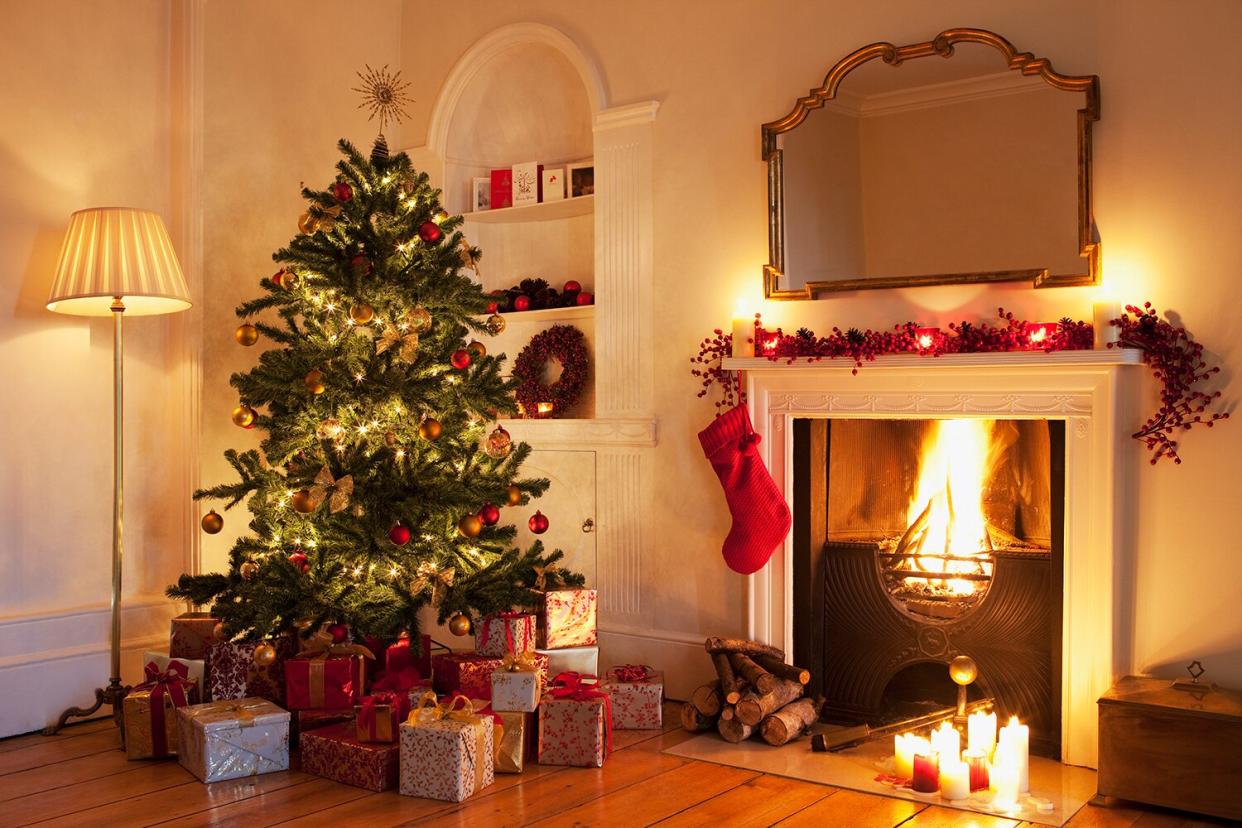
Getty
Year after year, the festive Winter holiday season is interrupted by heartbreaking news of deadly house fires. In some cases, it's the centerpiece of the holiday — the Christmas tree — that sets tragedy into motion.
Last year, a Pennsylvania father and his two sons, ages 8 and 11, were killed when their tree caught fire on Christmas morning. The blaze, which police believed may have started with Christmas lights on their tree, completely destroyed the family's home.
In 2020, two children in Washington had to jump out of a third-story window to escape their apartment after their tree began to burn. And in 2019, a California father and his three children were killed when their Christmas tree ignited, causing their home to go up in flames.
"Holidays are meant to be a time of joy," says fire safety expert James W. Tomes, who spoke with PEOPLE about keeping homes safe during the holidays.
"A fire that maybe burns someone's house down or at a minimum burns down their Christmas presents, that's sad enough," says Tomes, 55, the president and CEO of Phoenix-based Telgian, a leading company in the fire-protection industry. "But God forbid, somebody loses life during a holiday fire — that's something that will be with that family the remainder of their lives."
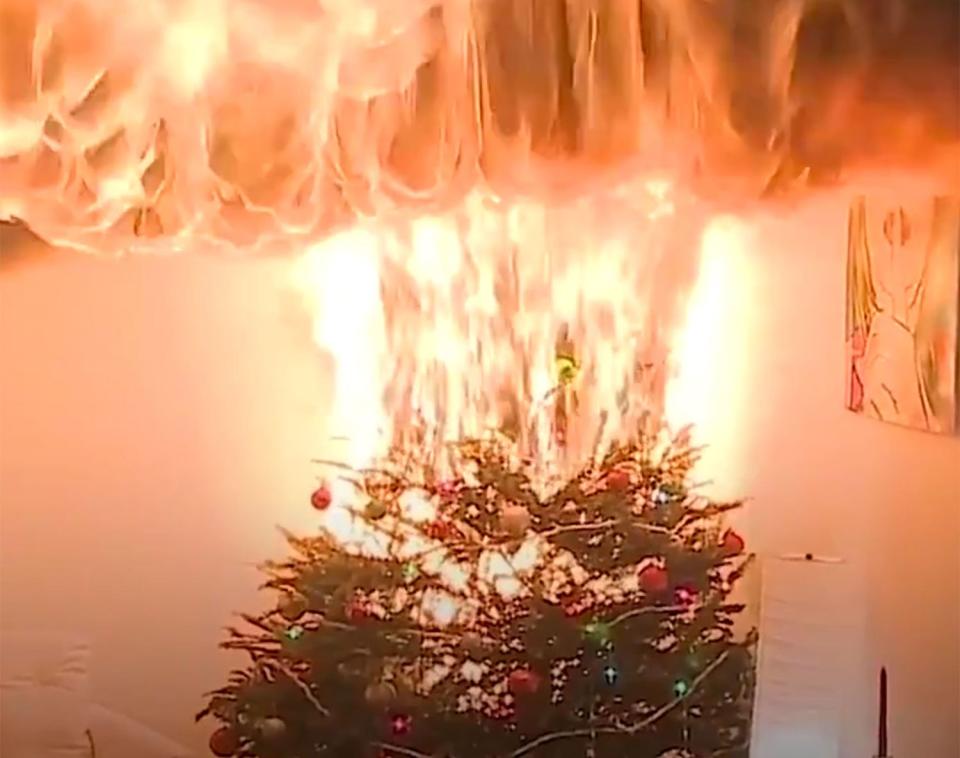
Though he doesn't want people to be afraid of celebrating and decorating for the holidays, Tomes also wants to help people stay safe.
"I don't believe in scaring people," Tomes says, "but there have been some horrific fires and deaths." Here are his tips:
Hanging Holiday Lights
Check them carefully. Look to see if there's a nick in the chords, or the bulbs are cracked. "If it looks old and beat up, it's probably not safe," Tomes says. "After time, it's just safer and wiser to go out and buy some new lights."
Another thing to keep in mind is that some indoor lights cannot be hung outside as "they're not as rugged" and are therefore "more susceptible to damage."
If you need to shop for a new set of lights to make your tree, yard or windows dazzle, be sure to look for the "UL" on the box, which stands for "Underwriters Laboratories."
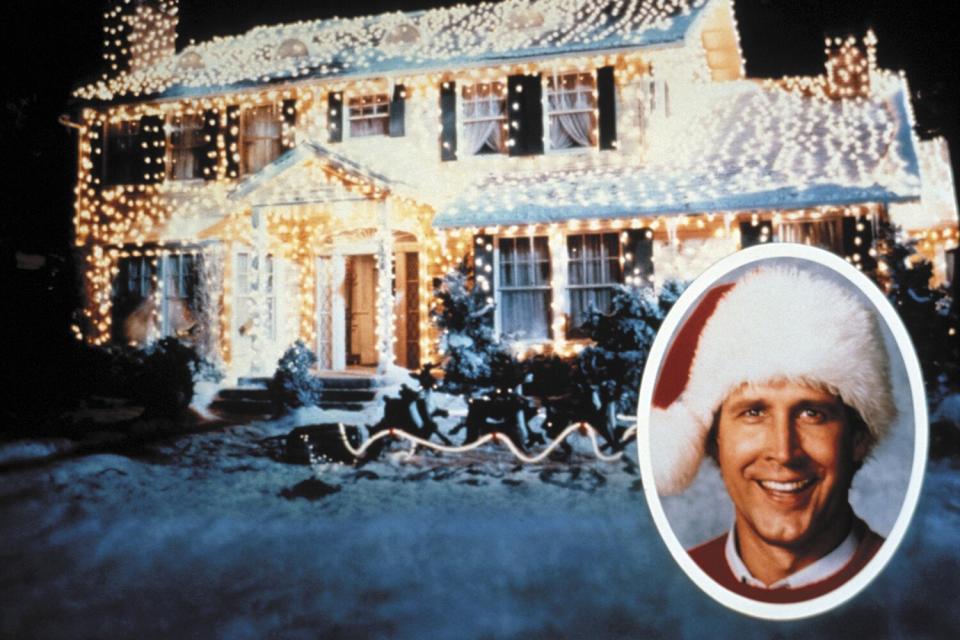
Warner Bros/Kobal/Shutterstock
"That means they've done testing to make sure that the product is safe, and was designed properly," Tomes explains. And if you don't have the box anymore, you can look on the attached tag, as the "UL" is also often on the plug.
Also, avoid using a staple gun to keep lights in place — "use plastic clips when putting up your lights" — and overloading circuits. If you're using incandescent lights, only string two or three together. Otherwise, Tomes says, "they'll cause too much heat in those wires, and that can also cause a problem."
RELATED: Here's How to Minimize Your Chances of Causing a Fire When Using a Space Heater
When it's time to take down your lights and store them away until next year, carefully wrap them in the original packaging and then place them in a plastic container. This helps lights last longer and prevents mice from chewing on a tangled ball of string lights. "The more protected they are, the better," Tomes says.
Picking a Tree
If you're decorating with a live Christmas tree, "make sure it's fresh," Tomes suggests. Falling needles mean "the tree's already dying" and you should find another one as dead trees dry up quickly, making them more flammable.
When shopping for a live tree, always ask for a "fresh cut" at the lot, or remove two inches from the bottom of the trunk when you get home.
It's also important to water your tree daily. "Keep that tree as fresh as you can," Tomes says. If it gets too dry, it could "go up like a Roman candle," he says, noting that in addition to burning quickly, dry trees put off a lot of heat when they burn. "It can quickly overwhelm a building."
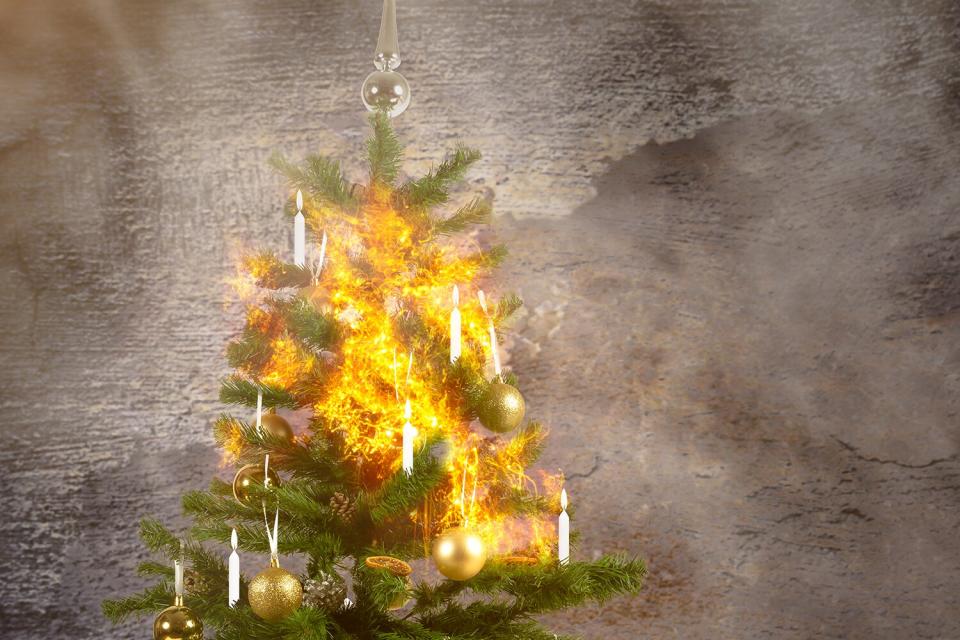
Getty
In terms of placement, keep the tree at least three feet from any heat source (including the fireplace) and Tomes urges people not to use candles to light up their Christmas trees.
Most Christmas tree fires happen with live trees, according to Tomes, who suggests considering an artificial tree that is treated with a fire-retardant spray. "They can still catch fire," he warns, before noting that it's typically not "as dramatic."
Decorating a Fireplace
It might be tempting to hang Christmas stockings above a wood-burning fireplace, but putting them in front of flames could spell trouble.
"Hang the stockings a little further away," Tomes suggests. "If you're burning real wood, you'll get embers that come off and you'll hear the snap, crackle and pop of a fire. Those can get in the stocking material and could cause a fire."
If hanging your stockings over the fireplace mantle is a must, he recommends placing them on the ends rather than the center.
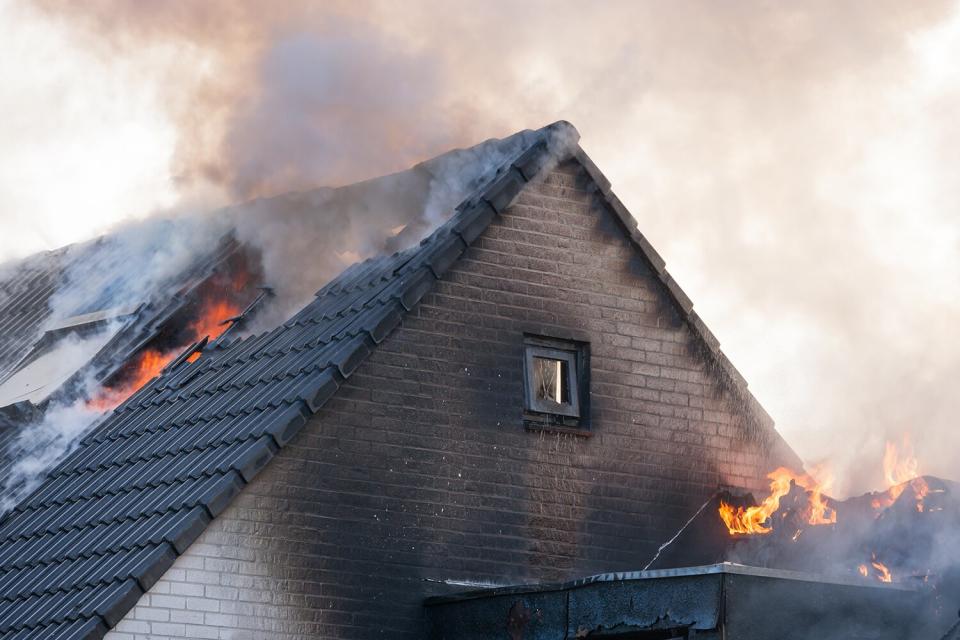
Getty
Other things to be wary of are decorating your mantle with live greenery — as pine branches dry out, a spark from the fire could easily catch and "it will burn quite rapidly" — and displaying holiday cards or crafts on the mantle. Instead, Tomes recommends an entry table for festive displays.
"Two out of every five decoration fires happen because decorations are placed too close to a heat source," he explains, which includes fireplaces, radiators, space heaters, kitchen stoves and anything that has an open flame.
Burning Candles and Lighting a Menorah
"It's a joyous season," Tomes says. "No matter what your faith or persuasion, candles are involved." But cats, kids or tipsy house guests can easily knock them over.
About a third of all decoration house fires are caused by candles, according to Tomes.
While placing a wreath around a candle might make a beautiful centerpiece, it can be risky. Wreaths aren't usually watered after you bring them home from the store, so they dry out and can catch fire quickly, Tomes says. He recommends using an electric candle instead.

Getty
"It's best to have candles off by themselves," Tomes says. "I'm not anti-candle. I love real candles. But just make sure your candles are freestanding and not near other things that can burn."
When it comes to menorahs, Tomes suggests keeping the surface around it clear — and not piling up presents, stuffed animals or greenery around it. Oh, and always make sure to blow out every candle before going to bed or leaving the house.
Cooking a Holiday Feast
Home fires caused by cooking peak at Thanksgiving and Christmas, according to the National Fire Protection Association, which states that "unattended cooking was the leading cause of cooking fires and casualties" in a recent report.
In the holiday kitchen, "there's just so much more going on," says Tomes. "When I'm entertaining guests, I'm going back to make sure the right music is on, to make sure there are cocktails, and I might have a sauce simmering on the stove. Multitasking. That's what makes holiday cooking more of an issue — you're distracted."
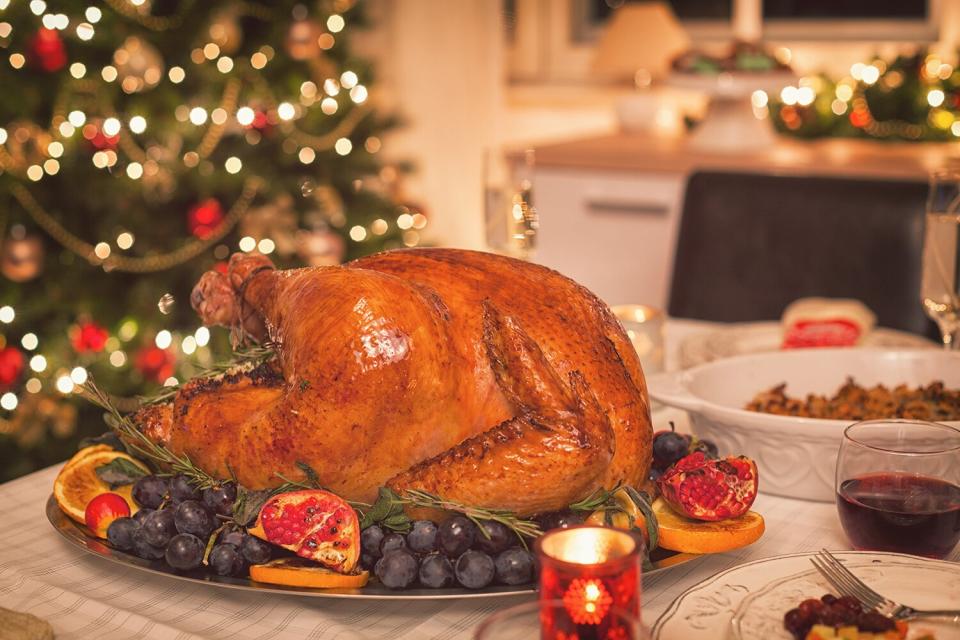
Getty
Grease fires — which happen when oils or fats get hot enough to ignite — are also a big concern. If something cooks down too far, "it can catch fire in the bottom of the pan," Tomes explains.
Never miss a story — sign up for PEOPLE's free weekly newsletter to get the biggest news of the week delivered to your inbox every Friday.
Even more common, though, is "when something bubbles up and boils over, or you're transferring something to another pot and you spill it," he says. For example, be careful when pouring melted butter from one pan to another when making rich holiday food. If it splatters on a hot stove, it can flame up.
Keep a fire extinguisher close to or in your kitchen, Tomes suggests, and know how to use it. Remember to "PASS" or "pull the pin, aim, squeeze and sweep."
Before Bedtime
Although holiday lights can spread cheer on cold winter nights, they shouldn't stay on while you sleep. One solution could be to set a timer, so all decorative lights inside, outside and on your Christmas tree go off at 11 p.m., Tomes says.
As for why that's important, Tomes explains that "if you're asleep, and something happens, you have less time to react. Plus, by the time you're awake and aware of what's going on, the house may already be filled with flames and smoke.

Getty
Opening Presents
A warm fire on Christmas morning is delightful, but opening up presents too close to the fire is definitely frightful.
"If you've got the fireplace roaring," he says, "keep the wrapping paper away."
For more holiday fire safety tips, visit Telgian.com or the National Fire Protection Association's Winter Holidays page.

